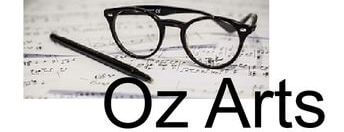
Ensemble of Chicago Opera Theatre
Lawrence Rupchak (conductor)
CDR 90000 034
TPT: 1:02:05
reviewed by Neville Cohn
If there’s any recording likely to trigger a resurgence of interest in the operas of Gian Carlo Menotti, it is this.
For reasons that are not entirely clear, Menotti’s works are not as frequently mounted as was earlier the case –
and, insofar as current CD catalogues are concerned, available recordings are very few and far between.
From a number of points of view, this is a recording to cherish, not least the quality of diction. What a joy to
hear every word of the libretto as clearly and unambiguously enunciated as if by actors of Britain’s Royal Shakespeare Company – and praise doesn’t get much higher than that.
For newcomers to The Medium who might perhaps have seen the movie Ghost in which Whoopi Goldberg takes the part of a fraudulent medium who shamelessly milks her gullible clients of their hard-earned money, Menotti’s masterpiece will (no pun intended) sound a familiar chord. As in the movie, in which Goldberg’s character is possessed by the spirit of the murdered Patrick Swayze, Menotti’s shyster medium is bewildered and terrified when a spirit hand grasps her throat.
Opera on CD is a difficult medium. Without the benefit of the visual dimension of the work, without the trappings of theatre, of lighting, décor, costumes and make up, factors which are crucial to developing and maintaining atmosphere, the challenge for the recording musicians is enormous. But it has to be said – and said clearly and unambiguously – that this Cedelle recording is a triumph, a quite remarkable achievement in the sense that, notwithstanding the absence of the features just enumerated, the eerie essence and emotional range of the piece is evoked to an extraordinary degree.
As Madam Flora (known to her family as Baba), Joyce Castle, the opera’s eponymous lead, is impressive. I listened, frankly enthralled, to her immaculate presentation. In the best sense, she lives the part, fleshing it out with such skill that even limited, as here, to being heard without being seen, the unpleasant essence of the character, her avarice, her willingness to take damaged, vulnerable people for a ride, comes through strongly; it’s a notable
achievement. Castle is perfectly cast; she contributes strongly to the verismo quality of the work.
And Patrice Michaels Bedi as Monica, Baba’s daughtger, is equally at home in the part, the sheer goodness of the character shining through, again, a notable achievement, bearing in mind that it is only through her voice that she reaches out to the listener. The casting in this recordingis flawless, typified by Madame Flora’s three clients who
are so convinced of her powers that, even when, after her terrifying psychic experience, she confesses her fraud,
they do not accept what she says, so desperate are they to believe that the lies that Baba has told them, are true. Their confusion and distress make for painful listening.
Throughout, the cast have the inestimable advantage of a near-impeccable accompaniment – the Ensemble of Chicago Opera Theatre – conducted by Lawrence Rapchak.
From first note to last, they give point and meaning to some of the most skilled operatic writing of the 20th century.
This is claimed to be the first compact disc recording of The Medium. And if the admirable quality of this
performance is anything to go by, it is very much to be hoped that there will be further recordings of Menotti’s works – The Consul perhaps? – from this source.
Copyright 2004 Neville Cohn


